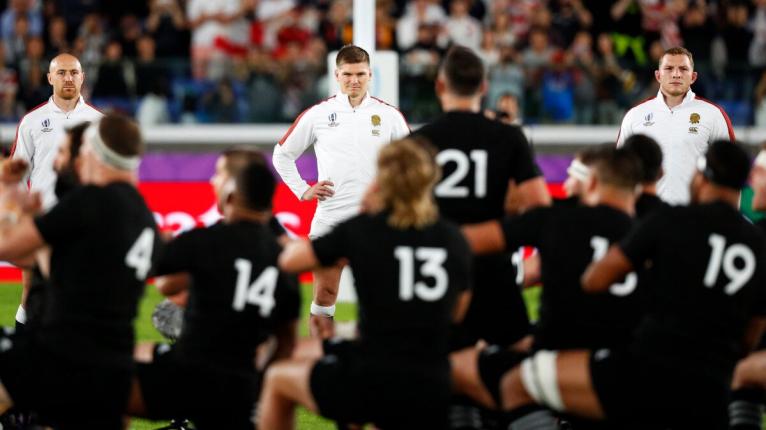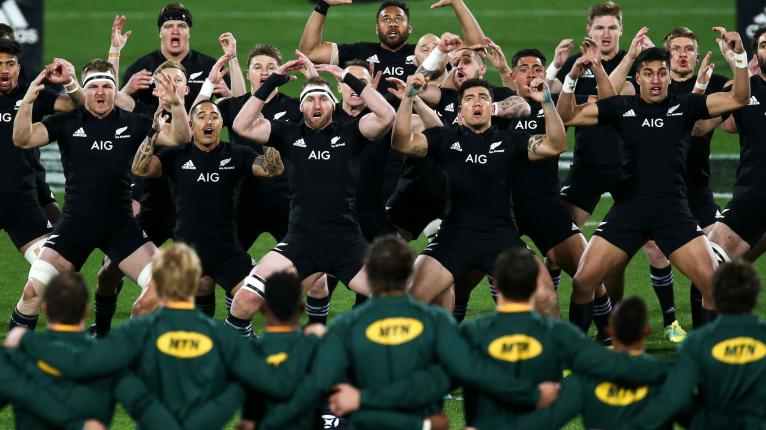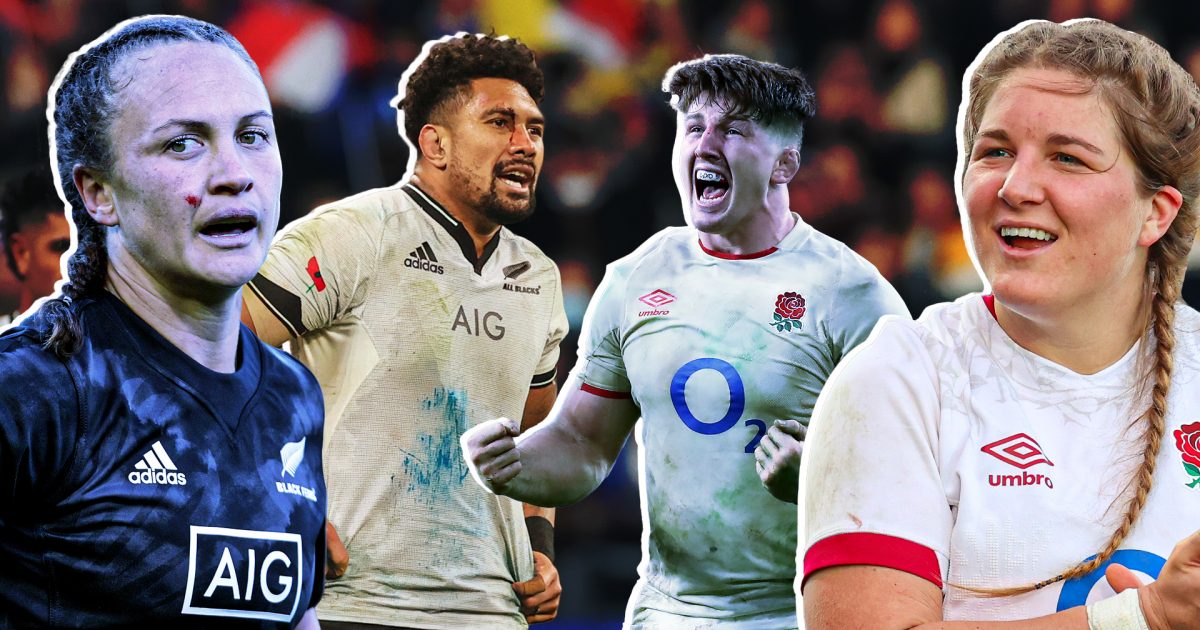On November 19 2022, England will play New Zealand for the first time since the two nations met at a World Cup semi-final in Yokohama more than three years ago.
The wait has been far too long, but it is unfortunately typical of a professional era in which the two nations have only played each other only three times in the last eight years; and rather less than once per season, on average, since the turn of the millennium.
By way of contrast, Australia (24 matches) and South Africa (14) in the south, and France (8), Wales (7) and Ireland (6) in the Northern Hemisphere have all enjoyed anywhere between twice and eight times the number of encounters with the All Blacks in the same time span.
Coaches and administrators alike are in no doubt about the value of the fixture, which only tends to deepen its mysterious rarity. When the 2022 match was announced, England head coach Eddie Jones commented, “These fixtures will be a really important part of our preparation for the 2023 World Cup. It’s almost a mini-World Cup in itself, and we are fortunate to have it less than a year before the tournament.
“It will be a good litmus test for the team to see where we are at, culminating in playing first and second in the world.”

New Zealand have been rated the number one rugby nation for more than 80 per cent of the time since the World Rugby rankings first appeared back in 2003, and they are undoubtedly the biggest drawcard on the planet. That means higher gate receipts and associated spin-off earnings.
Wales were so keen to stage a one-off test against New Zealand at the end of October that they accepted a date outside the international window, which deprived them of all their English-based players. They were prepared to hand over NZ $2m to NZR because they knew they would be making $8-10m profit from the one game alone.
WRU chief executive Steve Phillips expressed his sense of the unique value brought by the All Blacks’ brand:
“[The Principality stadium] is sold out and we could probably sell it out again. In terms of financial contribution for the year, it’s fundamentally important. It then funds the game and it’s a virtual circle.
“It’s great news to have them [New Zealand] coming here. It’s great financially and commercially, it’s great for our brand. Literally everything is sold out – every ticket and every hospitality space.”
If Wales, then why not England? It would mean a coupling of the highest-profile rugby team and the best drawcard, with probably the richest supporter base in the world. New Zealand are the only nation in world rugby accorded ‘A++’ status on the England Rugby website.
There has been friction in the past, with a power struggle between the two unions developing when a game outside the official November window was mooted back in 2017. The RFU made an offer, but NZR went for broke and demanded half of the total revenue generated by the game. The RFU pulled back from the brink, and the match never happened.
Top prices for a ticket alone to the Twickenham clash are expected to exceed the £200 (NZ $390) threshold for a premium seat (£202), for the first time ever. Advertised hospitality packages stretch from £899 to a staggering £1749 per person at the top of the range. That represents an average 15 per cent increment on similar pricing for the game against the World Champion Springboks one week later.
There has been friction in the past, with a power struggle between the two unions developing when a game outside the official November window was mooted back in 2017. The RFU made an offer, but NZR went for broke and demanded half of the total revenue generated by the game. The RFU pulled back from the brink, and the match never happened.
With New Zealand the biggest drawcard and Twickenham able to generate unparalleled revenue, the rivalry has been postponed rather than terminated. The most successful joint venture, a double-header back in 2012, signposted the way. The men’s match (won by England 38-21) preceded a game between the Red Roses and the Black Ferns, which also ended in an England victory by 32 points to 23. 160 minutes of Twickenham nirvana netted the NZRU $4m.
In the women’s game, England has moved well ahead of New Zealand since the Black Ferns won the last World Cup in 2017. The Red Roses are almost eight points clear of everyone else in the World Rugby rankings, having demolished their biggest rivals by a combined score of 99-27 over the last two matches in November.

England became the first nation to offer full-time contracts to their top 28 female players of the XV-a-side version of the game at the start of 2019, and they have not looked back since.
The second game between the Red Roses and the Black Ferns was played at Franklin’s Gardens in Northampton, after England had won the first match by a record margin of 43 points to 12 at Sandy Park in Exeter.
It illustrated how quickly new investment in the game can alter the balance of power on the field, and why consistently the best rugby team of the professional era needs to play against the most lucrative financial backdrop.
Typically, you would expect any side bearing the silver fern on their chests to react very strongly to a defeat of any kind, but the physical differences between a full-time professional outfit and a part-time team (however exalted their provenance) quickly became obvious in Northampton:
Excellence at the set-piece – in the first instance from a driving lineout, in the second at an exit scrum – might be written off as no more than a part of England’s traditional point of strength in both the men’s and women’s game. But that try from the close-range lineout is just too easy, and England scored five, all from the same start-point, over the course of the match. Now that is a major cause for concern.
England had built a 28-0 lead by half-time, and for most of that period, their domination of the contact points was so complete that it looked like a semi-opposed training session. Here is one of the longer scoring sequences from a lineout:
There is little resistance around the tail of the lineout on first phase, and the tackle of New Zealand No 7 and captain Les Elder is brushed off all too easily by England prop Sarah Bern on the second play of the sequence. The England backs can walk the ball in against a Kiwi defence shorn of its line-speed on third phase.
In the men’s version of the game, there can be anywhere between 150-250 rucks in a single match, and it was in this area that the Black Ferns felt the pinch the most:
It’s not just New Zealand’s biggest player, second row Joanah Ngan-Woo, being ground backwards in the first example, it is the difficulty the Kiwi cleanout has in removing any of the defenders at the post-tackle in the second. Despite being hit by three different New Zealand players, England number 6 Alex Matthews is still on her feet at the end of the play, and that means slow six-second ball on the next phase – even after a line-break has been made.
Even when the Black Ferns made progress through their traditional strength in the offloading game, they encountered an organised line and a very physical tackle contest on the following play:
This kind of pressure inevitable leads to scoring opportunities for the defence:
Another dominant tackle, and England left wing Abby Dow runs away from probably New Zealand’s best player, right wing Portia Woodman, to convert the fumble return into a score.
However much they might not want to acknowledge the fact, England and New Zealand need each other as rugby nations. In the men’s game, England need far more exposure to best team of the professional era than a meagre three matches in eight years. In the women’s game, they have responded to the challenge of the Black Ferns by means of a new investment in a full-time professional structure. It has already paid out handsome dividends.
Likewise, New Zealand needs to play more matches at Twickenham, potentially the most lucrative background for one-off gate and marketing revenue. A global season, with the associated rider of revenue-sharing between the hosts and tourists, cannot come quickly enough.
With Eddie Jones’ win percentage with England now surpassing Ian Foster’s record with the All Blacks, England versus New Zealand should be by rights, be one of the biggest – if not the biggest – rivalry in the world of rugby.
That it is not, is a sad indictment of the failure of the administration of the game to keep up with the needs of a fully-fledged professional sport. We can only hope that a new year brings with it more progressive attitudes. Most true supporters of the game would raise a glass to that thought, while sitting by their Christmas fire-sides.











































































